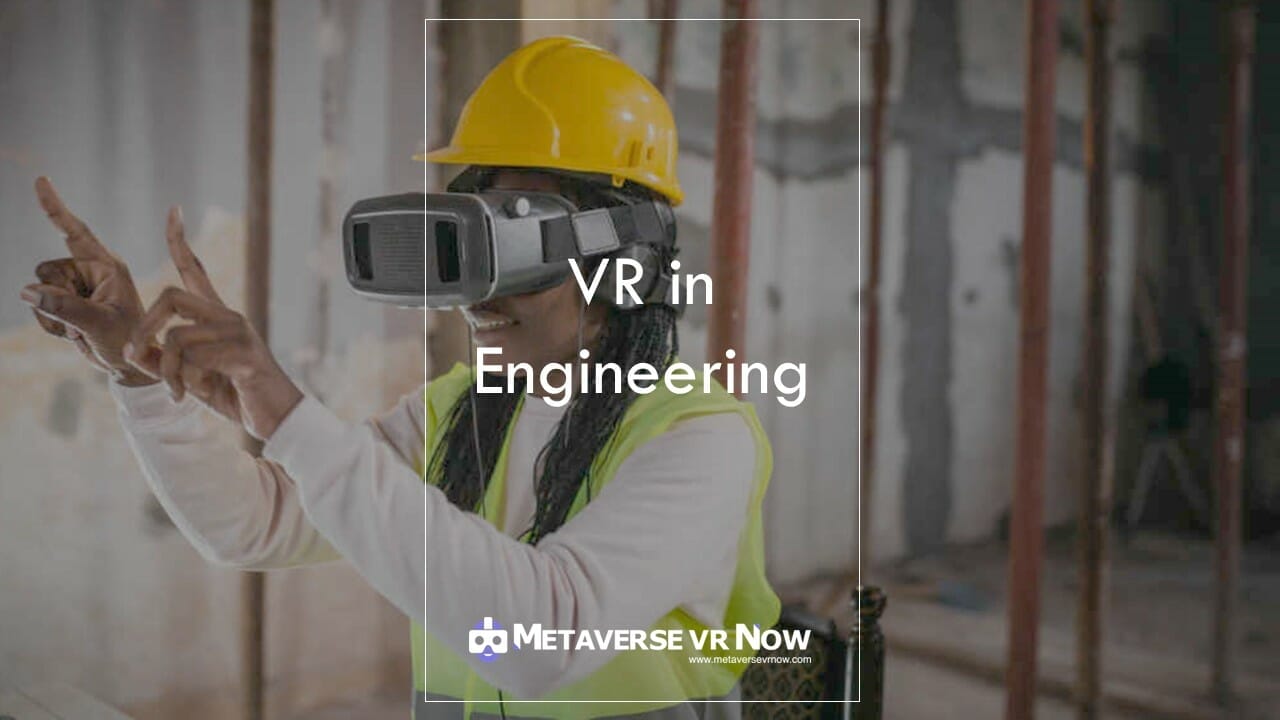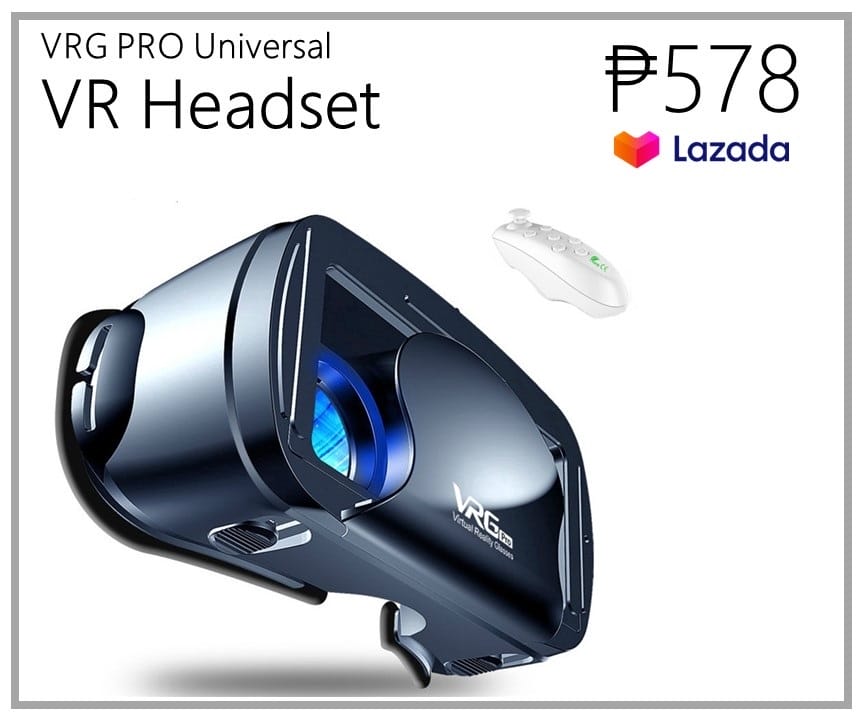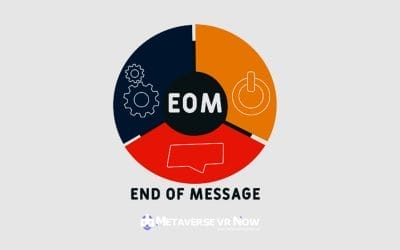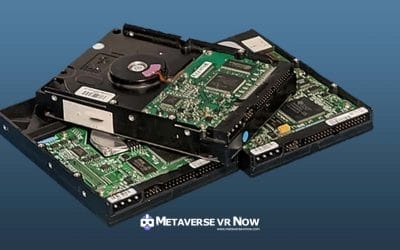In recent years, virtual reality in engineering has become increasingly popular. VR technology is transforming how engineers work and providing them with innovative tools to create new products and designs. With its ability to simulate complex engineering processes in a realistic manner, VR offers immense potential for improving engineering projects. This article will explore virtual reality in the engineering industry and its impact from design to product testing.
The engineering industry is constantly evolving and introducing new technologies to revolutionize our work. With the emergence of virtual reality (VR) technology, engineers can test designs in a realistic environment with greater accuracy and efficiency than ever before. VR has become an increasingly valuable tool for engineering professionals looking to create products quickly and with greater accuracy.
What Is Virtual Reality?
Virtual reality (VR) is rapidly becoming a key tool in the engineering industry. It can potentially improve the design and prototype process drastically, making it faster and more cost-efficient. By enabling engineers to test design ideas in a digital world, VR can revolutionize how products are created.
VR allows for intricate designs and complex simulations that would be impossible or too expensive to produce using physical models or prototypes. By creating virtual models, engineers can quickly evaluate how their ideas interact with one another in an environment of their own creation. Additionally, VR technology can help speed up product testing by simulating real-world conditions without having to physically build and test prototypes each time an alteration needs to be made. This could lead to substantial company savings and help products get on the market sooner than expected.
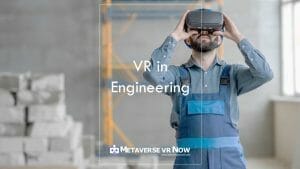
Virtual Reality Is Shaping Today’s Engineering Work
Virtual reality (VR) is revolutionizing the engineering industry in today’s world. VR has become an invaluable tool for engineers, helping them to create and design products more quickly and efficiently than ever before. By using virtual reality, engineers can test their designs in a simulated environment that accurately reflects real-world conditions, allowing them to identify any potential problems or issues before they are put into the production line.
The use of virtual reality has also enabled engineers to create incredible 3D visualizations of complex systems or processes, giving them a much clearer insight into how their creations work. This, in turn, lets them come up with innovative solutions faster and more effectively than ever before – saving both time and money on projects. Moreover, by providing unparalleled opportunities for collaboration between remote teams, VR is transforming the way engineering teams work together on projects across long distances.
Virtual Reality Cases In Engineering Prototypes
Virtual Reality (VR) is a powerful technology with many applications and use cases. In recent years, it has seen increasing adoption across industries and the engineering industry is no exception. VR can be used to create interactive 3D environments or simulations for engineers, allowing them to visualize their designs before building physical prototypes.
One potential use case for VR in the engineering industry is virtual prototyping. With VR, engineers can create simulations of their products almost entirely in a virtual environment before committing resources to construct the actual prototype. This helps reduce costs while still providing engineers with an accurate representation of their product’s functionality and behavior. Additionally, this type of virtual prototyping allows engineers to work collaboratively on projects quickly and efficiently without waiting for travel arrangements or meetings between different sites or teams.
Return On Investment Of Using VR In The Engineering Business
Virtual reality (VR) is becoming increasingly popular in the engineering industry as a way to reduce costs and improve efficiency. As companies explore new possibilities of VR technology, one of the main questions they need to answer is: what is the return on investment (ROI) associated with using this technology?
The potential ROI of using VR can be broken down into tangible and intangible benefits. Tangible benefits include cost savings related to travel, prototyping, design collaboration, and immersive training. Intangible benefits include improved employee engagement, enhanced customer service experiences, increased creativity in problem-solving tasks, and reduced time-to-market for products. In addition to these advantages, engineers also benefit from being able to visualize solutions more quickly because of their immersive environment.

Other Technologies And Devices Work Well With Virtual Reality
Integrating virtual reality (VR) technology into the engineering industry has revolutionized how engineers can plan, design, and create new structures. By utilizing VR headsets, engineers can now work in a 3D simulated environment that can be manipulated in real-time with motion controllers. But what other technologies and devices combine well with VR?
Drones are an excellent addition to any engineer’s toolbelt when using VR. A drone can provide live footage from high angles, which can then be inserted into a 3D simulation with the help of remote sensing software. Combined with VR headsets and motion controllers, this allows engineers to get a real feel for their plans from far away points of view.
Additionally, to use augmented reality (AR) systems is effective alongside VR in the engineering industry.
How Is VR Used In Engineering?
Virtual Reality (VR) technology has been used in the engineering industry for various applications. It is becoming increasingly popular due to its ability to simulate everyday engineering scenarios in an immersive, user-friendly manner. In addition to being able to simulate physical environments and processes, VR offers a number of advantages over traditional methods, such as cost-effectiveness, faster prototyping times, and enhanced visualizations.
The engineering industry can use VR for product design, training engineers in a safe environment, testing prototypes, or simulating complex scenarios. For example, it can be used to design automobiles or aerospace components with 3D models that are then tested and modified with real-time feedback. By incorporating the use of haptic devices, engineers can test the designs interactively by feeling how parts interact with each other before they move on to expensive physical prototypes.
Virtual Reality In Construction
Virtual Reality (VR) is a technology that is rapidly revolutionizing the engineering and construction industry. In short, VR allows civil engineers and architects to design 3D models of structures in real-time before they are built, allowing for better planning, cost savings, and improved safety.
The advantages of incorporating Virtual Reality into the engineering process are numerous. For instance, virtual reality technology can be used to create realistic simulations of how a building would look in a given environment. This can help engineers plan better by providing them with visual data that shows how their designs would interact with the natural environment around them. Additionally, using VR enables engineers to test out different construction materials onsite before they commit to purchasing them or using them in their projects. By doing so, they can ensure the materials used meet the project requirements while minimizing costs associated with unexpected changes during construction.
Virtual Reality In Mining
The mining industry has seen many changes over the years, with technology continually advancing and improving operations. One of these advancements is introducing virtual reality (VR) in mining engineering. VR allows engineers to visualize their designs and plans before implementation, making it a powerful tool for maximizing efficiency in mining operations.
With VR, engineers can undertake immersive design walkthroughs to understand their designs better before they become physical structures or reality. This means that potential issues and risks can be identified earlier on in the design process, allowing them to make changes quickly if needed. Using this technology, engineers can save time and money by avoiding costly mistakes after construction.
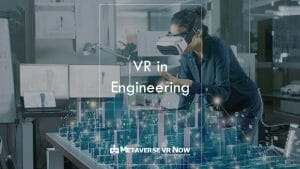
How Does Virtual Reality Work In The Manufacturing?
Virtual reality (VR) is revolutionizing engineering by allowing design engineers to interact with and explore 3D models in an immersive environment. As a result, manufacturers increasingly leverage VR technology to optimize their production processes and enhance product designs. This article will explore how virtual reality manufacturing works, emphasizing its potential within the engineering sector.
Manufacturers can use VR to create a digital version of their production process and simulate it in an interactive 3D space. This allows any defects or problems in the design of a process or product prototype to be quickly identified and corrected before physical production begins. Additionally, designers can make more informed decisions about materials selection and improve assembly processes by using accurate visualizations provided by virtual reality manufacturing methods.

The Applications Of VR In Manufacturing?
Virtual reality (VR) has become increasingly popular in the engineering industry. It’s a form of technology that allows engineers to create and design parts and products with high levels of accuracy and efficiency. This article will discuss the various applications of VR in manufacturing and its benefits for businesses.
Engineers use VR manufacturing to create parts or products that would be difficult to produce using traditional methods. For example, complex components such as curved surfaces or intricate shapes can be created quickly and accurately through VR simulations. Additionally, these simulations allow engineers to make changes or adjustments to their designs before committing them to production. This eliminates costly rework or redesigns due to incorrect assumptions about how the part will function in real-life scenarios.
In addition to prototyping, VR manufacturing also plays an important role in product testing and analysis.
Niches Of VR Can Be Used In Engineering
Virtual Reality (VR) technology is an ever-evolving field of engineering that has opened up a wide range of possibilities for many industries. While it has been primarily used in the gaming and entertainment industry, VR engineering can also be applied to other areas such as healthcare, education, and the engineering industry. In particular, VR engineering can help engineers design, create and test products in virtual environments before they go into production.
Engineers have already seen positive results from using virtual reality tools in their work environment. For example, they can prototype components quickly and experiment with different designs without building physical models or prototypes. This helps reduce costs and increase efficiency by allowing engineers to quickly develop new ideas on the fly without any physical restrictions.
Virtual Reality And Rail Construction
Virtual reality (VR) is revolutionizing how rail construction projects are managed in the engineering industry. Used to create detailed architectural models and simulate real-world conditions, VR technology gives engineers unprecedented control over their projects. By creating precise digital copies of tracks, resources, and personnel, engineers can confidently plan every step of a project.
Using VR for rail construction, engineers can quickly and easily make changes or adjustments to their plans. Virtual reality also helps reduce errors in design by allowing engineers to review plans in an immersive environment before they are implemented. This eliminates costly mistakes that small oversights or inaccuracies in a paper drawing could otherwise cause. The interactive nature of virtual reality lets designers view elements from different angles and perspectives while being able to adjust parameters regularly to perfect their designs.

Virtual Reality And Car Design
Virtual reality (VR) is a revolutionary technology that is transforming the engineering industry in numerous ways. One particular application of VR technology is its use in car design. By utilizing computer-generated 3D models, engineers can now simulate and interact with vehicle designs before they are actually built. This allows them to make quick and effective adjustments to their designs without having to invest time or resources into physical prototypes.
In addition, virtual reality technology allows car designers to immerse themselves in their work truly. By putting on a headset, they can experience the design from an inside perspective as if it were real and make detailed changes quickly and easily, all within the virtual environment.
Immersive Marketing And Sales In Automotive
Virtual reality (VR) is quickly becoming an integral part of the engineering industry, and automotive marketing and sales are no exception. Companies in the automotive industry can now give potential customers a one-of-a-kind virtual experience that’s as close to reality as possible. This immersive VR marketing and sales approach could revolutionize purchasing and selling cars.
Using VR technology, auto dealerships can provide customers with an interactive visual experience of their vehicles before they make a purchase decision. Through this immersive environment, customers can explore each model’s interior and exterior components in detail, virtually sitting inside the car or truck to better understand its features. Furthermore, this virtual reality environment allows dealers to showcase their full inventory while providing customizable options so that customers can customize their vehicles just as they would if they were standing in a showroom.
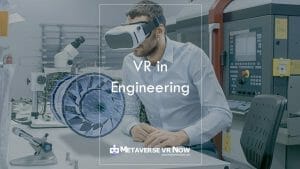
Virtual Reality In Aircraft
Virtual reality (VR) is becoming increasingly popular in the engineering industry, particularly in relation to aircraft. Since its introduction, virtual reality has revolutionized how engineers can work with aircraft design, allowing them to interact with models on a three-dimensional scale. With this technology, engineers can view their digital blueprints from any angle and analyze every detail before creating a physical prototype. This saves time and money while also allowing for more precise designs.
VR has also been used to train pilots and cabin crew by providing simulations of real-life scenarios they may encounter while flying an aircraft. The simulations allow pilots and cabin crew to learn how best to respond in situations such as engine failure or emergency landings without risking actual lives or hardware damage.
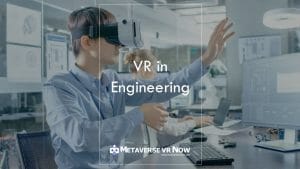
Virtual Reality In Appliance Manufacturers
Virtual Reality (VR) technology is revolutionizing the engineering industry. In particular, appliance manufacturers are embracing VR as a way to increase efficiency and improve their design process. With the help of VR, appliance manufacturers can now go beyond traditional two-dimensional designs and create 3D models that allow for more accurate simulations and testing.
The implementation of VR in appliance manufacturing has enabled engineers to visualize their designs better before production begins. This allows them to identify potential problems earlier in the development stage, reducing overall costs and expediting time-to-market timelines. Additionally, with the help of virtual reality, engineers can quickly test several different prototypes without having to produce multiple physical versions first. And by utilizing this technology during their development stages, they can build products that meet customer needs more effectively than ever before.
Virtual Reality In The Technology Sector
Virtual reality is a growing trend in the technology sector, and its impact on the engineering industry is no exception. The potential of virtual reality (VR) to revolutionize the engineering process promises to be immense, with applications ranging from product design and engineering prototyping to enhanced safety training and improved maintenance processes.
As VR technology becomes more cost-effective and user-friendly, engineers are becoming increasingly aware of its possibilities for streamlining processes and improving efficiency. By allowing engineers to simulate real-world scenarios in an immersive environment, VR opens up new opportunities for testing, prototyping, and evaluating designs without any risk of harm or damage. Additionally, it provides invaluable data that engineers can use for further research and development work.
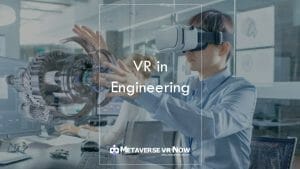
Virtual Reality In Services
Virtual reality (VR) technology has been a major game changer for the engineering industry, allowing companies to compete more effectively in an increasingly virtual world. By leveraging new advances in immersive technologies, engineers can create realistic designs and simulations to provide better client services.
Using VR platforms such as the HTC Vive or Oculus Rift, engineers can visualize ideas quickly and share them with other team members. This allows companies to collaborate on projects without being physically present in the same room. With VR technology, designers can simulate interactions within an environment while simultaneously manipulating objects and testing various scenarios. Furthermore, these immersive experiences can allow teams to identify areas of improvement or optimization before going into production – leading to better overall performance and cost savings down the line.
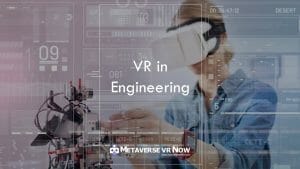
Virtual Reality In CAD
Virtual Reality (VR) is a revolutionary technology that has already made its mark on the engineering industry. VR allows engineers to gain insight into their designs and simulate real-life conditions before actually manufacturing them. Using VR in combination with Computer-Aided Design (CAD) software can create an immersive virtual environment where engineers can explore and analyze complex geometry, test products, experiment with material properties, and quickly iterate on design ideas.
The use of VR in CAD has enabled engineers to move beyond the limitations of 2D platforms and view 3D models from multiple angles in real time. This allows for a greater understanding of components and how they fit together, resulting in improved decision-making capabilities during the engineering and design process. Additionally, VR provides a platform for collaboration amongst engineering teams as they can share their 3D space and work jointly on projects remotely.
Virtual Reality In Engineering Design
The engineering industry is on the cutting edge of virtual reality technology. For engineers, virtual reality offers a wide range of possibilities to improve their designs and increase their efficiency. With the help of VR, engineers can create detailed 3D models that simulate real-world scenarios. Virtual reality helps them evaluate how their design will work in engineering and under varying conditions before they create physical prototypes or begin production.
VR also allows engineers to collaborate with colleagues worldwide in real time by allowing them to view, discuss, and manipulate 3D models together as if they were in the same space. In addition, VR can be used for training purposes, so engineering teams can learn new techniques and skills without leaving the office. Virtual reality has become a powerful tool for developing innovative products and services in the engineering sector by providing an immersive environment.
Virtual Reality In Architecture
Virtual Reality (VR) has become an increasingly popular tool in the engineering industry, particularly in architecture. It creates an immersive virtual reality experience that allows users to walk through a design before it’s built. Not only does VR enhance the design process, but it also encourages collaboration between architects and other stakeholders.
VR technology creates a 3D model of a building that can be explored from all angles with just the click of a button. This makes designing and decision-making much faster and simpler than traditional methods. Additionally, any changes or alterations made during the virtual exploration are instantly visible so designers can make quick adjustments. With this technology, architects now have the ability to envision their designs in real-time and make decisions with ease.
Moreover, VR also enhances communication between design teams by making it easier for everyone involved to understand complex designs with clarity and accuracy.
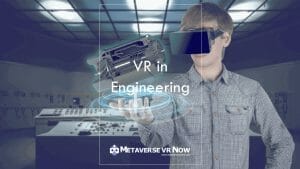
Virtual Reality In Interior Design
Virtual Reality (VR) is revolutionizing the engineering industry and transforming how interior design projects are carried out. With the help of advanced technology, architects and designers can now visualize their ideas in 3D. By using VR tools, they can create immersive images that look exactly like real-life environments. This helps them better plan out their designs accurately and make adjustments easier and faster than traditional methods.
The introduction of VR into the engineering industry has enabled faster project completion since fewer physical prototypes need to be built before finalization. It also enables designers to make changes quickly, as mistakes or errors can be easily identified within a virtual space before construction begins. Additionally, it allows for collaboration between teams from different geographic locations, further improving efficiency by reducing travel costs associated with traditional in-person meetings.
Benefits Of VR In The Engineering Industry
The engineering industry has embraced virtual reality (VR) technology, and the benefits are now being realized. VR offers engineers a unique way to interact with their designs that can’t be matched by traditional 2D tools alone. By immersing themselves in the experience, engineers can gain valuable insights into their design processes, creating better solutions for their clients.
The use of VR in engineering allows for faster prototyping and product development. Engineers can create 3D models on computer-aided design (CAD) software tools and visualize them in a virtual environment, allowing them to quickly identify potential design problems before they become an issue. With this level of precision, designers can save time on costly revisions while ensuring the quality of the final product.
Immersive Media Experience For Engineers?
Fully immersive media experiences revolutionize the engineering industry with their unique blend of virtual reality and real-time technology. By utilizing 3D models, engineers can achieve higher productivity in their workflows. Using this cutting-edge technology, engineers can virtually explore design spaces, visualize data in an interactive way and collaborate on projects more quickly than ever before. With immersive media experience, engineers can take full advantage of the three-dimensional environment to add more depth and detail to their designs, resulting in higher-quality products.
Virtual reality technologies enable designers to interact with digital models as if they were present in person, creating a more realistic perception of how their designs may look once implemented into physical form.
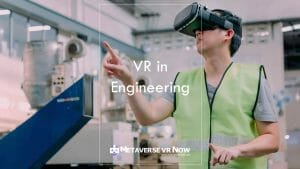
Seamless VR For Engineers
It’s no secret that virtual reality (VR) technology has drastically changed the engineering industry. Engineers can now use VR to build structures in a virtual environment, allowing them to see how their designs will look and interact with the real world. This allows engineers to quickly test ideas and constructions without going through the long and expensive process of the physical structure.
The use of VR in engineering is becoming more popular every day as companies are investing heavily in making this technology more accessible. Many virtual reality software programs have been developed, allowing engineers to easily create 3D models of their designs, visualize them in an immersive environment, and make changes accordingly. Using these tools, engineers can significantly reduce development costs while also mitigating risk by testing out different scenarios before any physical construction begins.
Using Virtual Reality To Gain A Competitive Edge
The engineering industry is rapidly changing and evolving. With the introduction of virtual reality, engineers now have access to an entirely new way to gain a competitive edge. Virtual reality technology offers unprecedented opportunities for greater collaboration, improved design accuracy, and expanded customer engagement.
Virtual reality allows engineers to visualize designs in detail before any physical construction begins. It enables them to detect errors early on in the process and make necessary changes quickly with minimal disruption or cost. Additionally, teams worldwide can use virtual reality to collaborate on projects as if they were all working together in one room. This improves communication between team members’ difficult coordination and creates a more efficient workflow overall.
Finally, companies can use virtual reality to give their customers an immersive experience when engaging with their brand or product line.
Engineering Industries & Verticals Benefitting From Virtual Reality
Virtual Reality (VR) is increasingly used in engineering to create a more efficient and cost-effective working environment. The technology has been applied across many engineering verticals, from aerospace to civil engineering. It provides an immersive experience, allowing engineers to explore complex problems and design solutions more accurately than with traditional methods.
At its core, VR allows engineers to test their designs in a virtual space before building a physical version. This helps them save on costs associated with prototyping, as well as identify potential issues in their design earlier on in the process. Furthermore, it also provides an enhanced visualization of data and models, which can be used during product development stages when discussing ideas or making decisions.
The use of VR is particularly beneficial for automotive engineers who can incorporate 3D visuals into their designs for better performance analysis and quality control purposes.

What Devices Are Necessary For 3d Visualization?
3D visualization has become an essential tool in the engineering industry, with virtual reality (VR) technology at its core. VR provides designers and engineers with a comprehensive look at how different elements of design projects fit together, allowing them to visualize the project as a whole before fabrication begins. To use 3D visualization effectively, several key virtual reality devices are necessary for successful implementation.
First, a high-performance computer is needed to support the data processing requirements of VR applications. This computer should have powerful CPU and GPU components for fast rendering of 3D models and textures. Additionally, it should be equipped with sufficient RAM so multiple tasks can be carried out simultaneously without compromising performance.
Second, a head-mounted display (HMD) is also essential for full immersion in VR environments.
A Brief History Of Virtual Reality
Virtual reality (VR) is a technology that has been around for decades, but it’s only recently that it’s become widely available to the public. The idea of modern VR began in the 1960s when engineer Ivan Sutherland developed what he called “The Sword of Damocles.” This was the first virtual reality system, and it was used to display 3D wireframe objects on a computer screen. After this came Morton Heilig’s Sensorama machine in 1962, which enabled users to experience smell and movement in virtual reality while watching a film in 3D.
Since then, VR has been used across numerous industries, including engineering, as an effective tool for prototyping and training simulations. Engineers are using this technology to create simulated environments where they can design products without actually building them first.
Is Virtual Reality Just A Fad?
Is virtual reality just a hype? While some may view virtual reality (VR) as simply a passing trend, its potential impact on the engineering industry is much more substantial. As technology continues to evolve, VR’s ability to create immersive learning experiences in engineering has become increasingly relevant and powerful.
There is no doubt that virtual reality has already transformed many aspects of the engineering field. From education and training to prototyping and product design, VR offers engineers unprecedented levels of realism in their work. Through the use of this technology, students can gain a better understanding of complex concepts and develop skills faster than ever before. Additionally, companies can save time and money by creating high-fidelity prototypes within a simulated environment before moving into production phases.

How Do I Become A VR Engineer?
Virtual reality (VR) engineering is a growing field that is rapidly transforming the engineering industry. It has become an integral part of many organizations, offering engineers new and exciting ways to design products and services. Becoming a VR engineer requires a combination of technical skills, such as coding knowledge, experience with 3D modeling software, and an understanding of how to create interactive environments.
The first step in becoming a VR engineer is to gain expertise in the latest technology related to virtual reality. This means learning about the various platforms available for creating immersive experiences, such as the Oculus Quest 2 or HTC Vive. Additionally, aspiring engineers should develop their coding skills with languages like C# or JavaScript to build VR system applications. Those with experience in 3D modeling software can use this knowledge to create stunning visuals for their projects using programs like Blender or Maya.

Final Thoughts: Virtual Reality in the Engineering Industry
In conclusion, Virtual Reality is a powerful tool in the engineering industry that can help reduce costs, increase productivity, and provide insight into complex projects. It allows engineers to interact with 3D models on an entirely new level, eliminating the need for physical prototypes. Virtual Reality also provides an opportunity to connect and collaborate with others in a more engaging way than ever before. With the development of new technology, such as 5G networks and more powerful graphics cards, the potential engineering applications for Virtual Reality in engineering are virtually limitless.
Virtual reality has become an increasingly important tool for the engineering industry. It has enabled engineers to work more efficiently and accurately in various engineering disciplines, from designing buildings to repairing machinery. The ability to move, manipulate, and interact with 3D objects in virtual space is exciting and promising. In addition, virtual reality offers engineers the opportunity to explore new technologies while reducing costs associated with physical prototypes.

